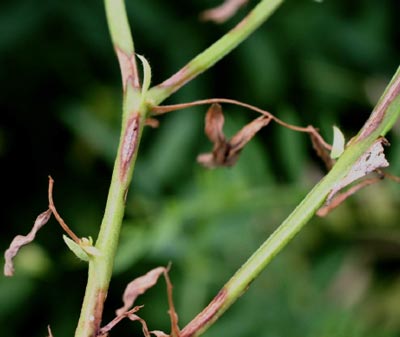Agronomy Update
Jul 08, 2024
Current Head Scab Risk
Below are the NDSU Small Grains Disease Forecasting Model scab risk map (top) and the National Fusarium Risk Tool map (bottom) for very susceptible varieties of HRSW or durum flowering July 7th or July 8th respectively. Risk is high for very susceptible varieties of HRSW and for durum, which lacks the resistance gene that has been incorporated into many HRSW varieties. Earlier planted durum has started to flower, and it is not too late to apply a fungicide to fields that flowered over the weekend. You have up to a week after the onset of flowering to get the best suppression of VOM from a fungicide application.

Anthracnose of Lentils
Anthracnose is a disease of lentils which can cause significant yield loss and is caused by the fungal pathogen Colletotrichum lentis. The prevalence of this disease in our area is unknown, but it is very common in Saskatchewan. In surveys conducted in 2018 and 2019 it was present in 74% and 92% of fields. At the end of 2019, group 11 fungicide resistance was confirmed in Saskatchewan. We do not have any reports of this in North Dakota or Montana thus far. Symptoms begin to develop at the late vegetative to early reproductive growth stages, usually low on the plant close to the soil. Cream colored spots on leaves and stems will become shrunken and fill with black micro-sclerotia as the disease progresses. Defoliation and stem girdling drive yield loss when environmental conditions are conducive. Current weather conditions put us at high risk for the development of this disease. The pathogen survives on crop residue and to a lesser extent is transmitted via seed, so fields with a history of lentil production are at greatest risk. Fungicide selection and canopy penetration will impact disease control so make sure to reach out if you have questions. Dr. Audrey Kalil, Agronomist/Outreach Coordinator
 |
 |